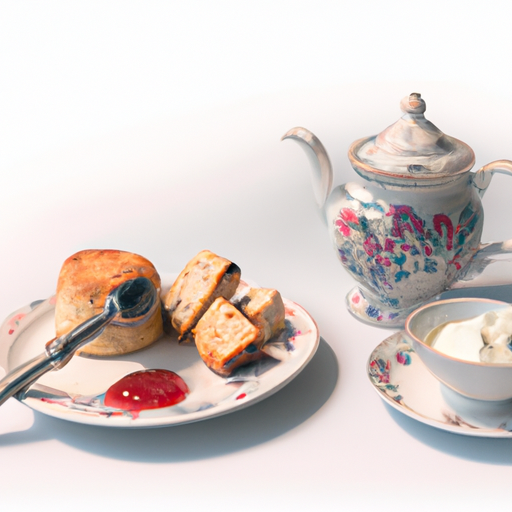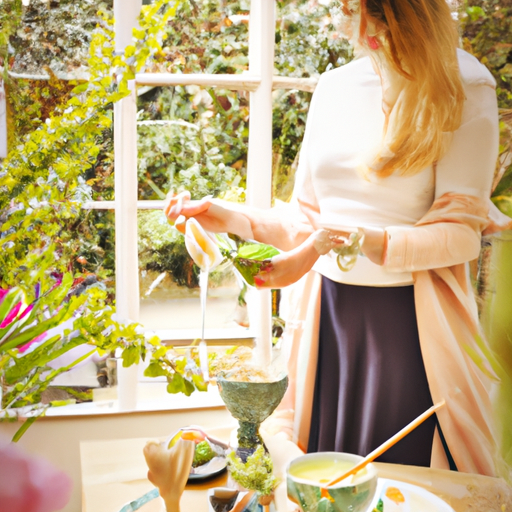Have you ever thought about the distinction between scones and biscuits? Allow me to share some insight and enlighten you.
Scones and biscuits may seem similar, but they have distinct characteristics that set them apart. It’s like comparing apples and oranges, or in this case, buttery goodness and flaky perfection.
When it comes to ingredients, both scones and biscuits share a common foundation of flour, fat, and liquid. However, scones take it up a notch with the addition of sugar, resulting in a richer and heavier treat. Scones come in a variety of flavors, from sweet to savory, and are often paired with clotted cream and preserves for a delightful afternoon tea experience.
On the other hand, biscuits are typically unsweetened and round, making them a staple in Southern cuisine. They are light, fluffy, and perfect for slathering with butter or gravy.
Texture-wise, scones have a crisp exterior and a tender interior, while biscuits boast flaky layers that practically melt in your mouth. Scones have their roots in Scotland, dating back to the 1500s, while biscuits have become synonymous with American cuisine.
Whether you prefer the elegance of scones or the down-home comfort of biscuits, these delightful treats have their own unique place in culinary history. So, the next time you indulge in a scone or biscuit, remember the rich flavors, fluffy textures, and cultural traditions that make them so special.
Key Takeaways
- Scones are richer and heavier than biscuits, often containing sugar and can be sweet or savory.
- Biscuits are typically round, unsweetened, and served as part of a meal, often with butter or gravy.
- Scones have a crisp outside and tender inside, while biscuits are light and fluffy with flaky layers.
- Scones are commonly associated with English afternoon tea, while biscuits are commonly served as part of a meal in the United States.
Similarities and Ingredients
I know that both scones and biscuits are quick breads made with flour, fat, and liquid. While they share these common ingredients, there are some notable differences between them.
One key difference is the level of sweetness. Scones are often sweeter than biscuits and can be enjoyed as either a sweet or savory treat. They can be made with various flavors such as blueberry, chocolate chip, or even savory options like cheese and herbs.
On the other hand, biscuits are typically unsweetened and are associated with savory dishes. They are commonly served as part of a meal and can be enjoyed with butter or gravy.
The differences in sweetness and variations in flavors make scones and biscuits unique and cater to different taste preferences.
Texture and Consistency
Fluffy as a cloud, scones and biscuits have distinct textures and consistencies. Scones are known for their crisp outside and tender inside, creating a delightful contrast. They have a richer and heavier texture compared to biscuits. On the other hand, biscuits are light and fluffy, with flaky layers that practically melt in your mouth.
When it comes to flavor variations, both scones and biscuits can be made with different ingredients and flavors, depending on regional differences. Scones can be plain or fancy, with added fruit, icing, or sprinkles, while biscuits are typically unsweetened. This variation in flavors allows for a wide range of choices and preferences.
Whether you prefer the rich and indulgent texture of scones or the light and flaky consistency of biscuits, both are sure to satisfy your cravings.
Serving Traditions
Scones and biscuits have distinct serving traditions that vary depending on cultural origins and regional differences. Understanding these traditions can provide insight into the cultural significance of these baked goods. Here are three key aspects of the serving traditions for scones and biscuits:
-
Accompaniments: Scones are traditionally served with clotted cream and preserves, which adds a rich and sweet dimension to the scone. On the other hand, biscuits are often served with butter or gravy, complementing their savory and slightly salty flavor.
-
Toppings: Scones can be enjoyed plain or fancied up with added fruit, icing, or sprinkles. This allows for a variety of flavors and presentations. Biscuits, on the other hand, are typically served plain, with their flaky layers and buttery taste taking center stage.
-
Cultural Significance: Scones are commonly associated with English afternoon tea, where they’re elegantly served on tiered cake stands. Biscuits, on the other hand, are a staple in Southern American cuisine, often served as part of a meal. These cultural associations have shaped the serving traditions of scones and biscuits in their respective regions.
Understanding the serving traditions of scones and biscuits adds depth to the enjoyment of these beloved baked goods and allows for a deeper appreciation of their cultural significance.
Frequently Asked Questions
What are some common variations or flavors of scones and biscuits?
I love trying different flavors of scones and biscuits! Some common variations of scones include blueberry scones and cheddar and bacon scones. Biscuits can be savory, like cheddar biscuits, or sweet, like strawberry shortcake biscuits.
Can scones and biscuits be made with gluten-free or alternative flours?
Yes, gluten-free scones can be made using alternative flours such as almond flour or gluten-free all-purpose flour. Similarly, alternative flour biscuits can be made using flours like rice flour or oat flour.
Are there any regional differences in the ingredients or flavors of scones and biscuits?
Regional variations in scone and biscuit flavors are influenced by local ingredients and culinary traditions. Traditional methods of making scones and biscuits differ, with some regions favoring sweeter scones and others preferring savory biscuits.
Can scones and biscuits be made ahead of time and frozen for later use?
Yes, both scones and biscuits can be made ahead of time and frozen for later use. Freezing baked goods like these provides convenience and allows for easy preparation when needed.
Are there any specific techniques or tips for achieving the desired texture and consistency of scones and biscuits?
To achieve the desired texture and consistency of scones and biscuits, it’s important to handle the dough with care. For scones, avoid overmixing to maintain a tender crumb. For biscuits, lightly knead the dough to create flaky layers.










